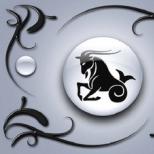Wood buffalo national park. Wood Buffalo National Park - a wonder of nature
For those who have never been to Wood Buffalo, it is not easy to imagine all the greatness this place. national park wood bison is the translation of the name of the protected area Wood Buffalo national park, which is located in the north-west of Canada and occupies flat expanses of over 44 thousand square meters. km. It is the largest national park on the American mainland, with a total length of 283 km from north to south and 161 km from east to west. Administratively, the park is located in the Canadian provinces of Alberta and the Northwest Territories, and geographically lies between the Athabasca and Great Slave lakes.
Most of the national park is occupied by water bodies - lakes, rivers, swamps. Having been in Wood Buffalo, you can see one of the most beautiful and huge inland deltas, which is created by nature. It is created by the Athabasca and Peace Rivers, the waters of which enter Lake Athabasca. The park is dominated by plains, but closer to the west, to the Caribou mountains, the relief begins to change. Due to the proximity to the pole, protected lands have another advantage for tourists. In winter and autumn, guests of the park have an amazing opportunity to watch the wonderful play of light in the sky - the northern lights.
The vegetation of Wood Buffalo is varied and rich. Coniferous and mixed forests, shrubs, woodlands characteristic of the tundra, meadow flowers and grasses, as well as the herbaceous flora of the wild prairies characteristic of the tundra. All this in combination with local climatic features- long cold winters, which are replaced by short warm summer days- creates excellent conditions for the residence of many animals and birds.

The permanent inhabitants of the national park are moose, several varieties of deer (black-tailed and white-tailed deer, reindeer caribou), marmots, hares, porcupines, musky rats, skunks and beavers. Interestingly, in this area, the researchers found a beaver dam, the length of which was 850 m. This is considered a world record, since usually the length of such structures is not more than 100 m. as well as more than two hundred species of birds. Among the birds, white cranes and pelicans attract increased attention, but their nesting sites are protected by environmentalists and are therefore closed to tourists.
Along with this, as can be seen from the name of the park, the main inhabitants of Wood Buffalo are American bison, in order to preserve the population, which the conservation area was created. These massive animals are somewhat similar in appearance to the European bison. Bison weigh about a ton, their body reaches three meters in length and two meters in height. Biologists distinguish the steppe and forest subspecies of the animal, both of them are represented in the park and largely thanks to the protection of Wood Buffalo still live on our planet. At the time of the creation of the national park, and this is 1922, the number of wood bison was not more than one and a half thousand, today the herd reaches 2.5 thousand individuals and is recognized as the largest on the mainland. The number of steppe bison is significantly larger than the forest bison and in the 1960s reached the limit of 10 thousand heads.

The special nature of Wood Buffalo was the reason for its inclusion in the list of UNESCO World Heritage Sites, which took place in 1983 and influenced the travel of tourists to these places. However, getting to the national park is not so easy. First you need to make an air flight to the Canadian city of Edmonton, then by a charter flight or by car, get either to locality Fort Chipuyan, in the province of Alberta, or to the city of Fort Smith, in the province of the Northwest Territories, which provide access to protected areas. Fort Smith, home of the Wood Buffalo National Park Authority, is accessible via the Mackenzie Highway, while Fort Chipuyan, home of the branch headquarters, is an adapted highway no, only air way.
When considering a tourist trip to the park, it must be taken into account that there are almost no roads in Wood Buffalo. There is only one car route for excursions in the protected area, while there is a large number of rules for driving a car, the violation of which is subject to impressive fines. As compensation for this, many hiking trails are offered for every taste. If you wish, you can use short trails or choose difficult, long hiking trails that require some experience. The likelihood of a close encounter with predators (wolves, lynxes) is minimal, as they are inherently cautious and shy away from human society.

In Canada, tourists are allowed to travel by boat. big rivers. By renting an ordinary boat or canoe in Fort Smith, you can sail to Fort Chipuyan, Fort McMurray or Fort Fitzgerald and enjoy the beautiful views of Wood Buffalo from an unusual angle.
Those who wish to get acquainted with natural attractions for several days can stay in the towns that are next to the national park - Fort Smith, Hay River, Yellowknife and Fort Simpson. locals with great pleasure they will rent a room or a house, camping sites or hotel rooms are also acceptable. The campgrounds are administered by the Wood Buffalo Authority, which grants parking permits.

wood buffalo
Wood Buffalo National Park is the largest not only in Canada, but in all of America. The park was created in 1922, much later than famous parks Canada. It stretches in the northwest of the country, for 283 kilometers from south to north and 161 kilometers from west to east. total area national park - about 4.5 million hectares. The territory of the park - coniferous and mixed forests, meadows, open plains, swampy plains and tundra woodlands, numerous rivers and lakes. There are no roads here, so Wood Buffalo serves as a safe haven for the only surviving herd of bison, for the preservation of which, in fact, the park was created. When Wood Buffalo was just created, there was only one herd of forest shaggy bison numbering 1,500 heads. Only one road passes through the entire territory of the park for independent tourist excursions, and the conditions of travel are strictly stipulated
The most interesting thing in the woods of Wood Buffalo is the forest bison preserved only here. From the high bank of the river, the view of the herds of these huge animals grazing in the valley makes an unforgettable impression. On the wide floodplains of the Peace and Athabasca rivers, covered with rich water meadows, these ancient bulls find beautiful forest pastures. The abundance of turf and willow in the undergrowth of poplar undergrowth, as well as a huge area of sedge meadows, provides them with food in winter. The wood bison is, apparently, the original form that inhabited the vast expanses of Eurasia and America in the preglacial and glacial epochs, the descendants of which were the ancestors of the steppe bison of America and the bison of Europe. Wood bison in northeastern Siberia died out just a few thousand years before our days, but they have survived here in northern Canada.
Before the Wood Buffalo National Park, created in 1922, the main task was to preserve the wood bison, which even then remained no more than one and a half thousand.
Canadian bison reaches a height of about two meters, and lengths up to three meters and weighs up to 900 kilograms. Once upon a time, bison were found throughout the Great Plains of the United States and Canada. Now the range of distribution of the steppe and forest varieties of bison is actually limited to the territory of Wood Buffalo Park.
During the European colonization of America, bison roamed the plains of the United States and Canada in large herds. Then there were about 60 million of them. Indian tribes used them for food. Later, during the wars of the colonists with the Indians, bison were exterminated in such incredible numbers that by the end of the 19th century there were negligible numbers of them left. And those remained only thanks to the efforts of the New York Zoological Society.
In the second half of the 1920s, over 6,000 steppe bison were introduced to Wood Buffalo National Park. But this did not solve the problem: tuberculosis was introduced with new individuals, and the free crossing of bison of two populations threatened the existence of the forest subspecies. Therefore, it was decided to keep a purebred herd of wood bison in a secluded isolated part of the national park. So, 18 animals were settled in a special reserve on the banks of the Mackenzie River. In addition, the habitats of forest and steppe bison were reliably divided.
Beginning in 1925, bison as rare view protected by law. Therefore, its number is steadily growing. So, in 1950, 13 thousand steppe, forest and hybrid bison lived in Canada. This is the largest herd in the Americas. In 1959, the first 10 licenses for shooting bison in the vicinity of the park were already issued.
Wood Buffalo Park - perfect place for bison: flooded sedge meadows, various shrubs and poplar undergrowth reliably serve as a source of food for the animal in summer and winter.
Other wild animals also live in the park: bears, lynxes, wolves. Quite a lot of moose and beavers, porcupines and skunks. There are more than 200 species of birds. The most rare type of white American cranes, of which there are only a few dozen left on earth. The deaf wilds of the Wood Buffaloo forest swamps are the only place where these huge birds nest, similar to our white cranes - the Siberian Cranes that live in the tundra of Yakutia. American cranes also winter in one single place - in the marine marshy meadows of Texas. Previously, these cranes were larger and more widespread, but due to the reduction of places suitable for their habitat and extermination by people in the past, these wonderful birds are now under the threat of extinction.
It must be said that zoologists in Canada and the United States are doing everything possible to save birds. Their nesting and wintering areas are protected. During the migration of cranes, their migratory flocks are protected by following them on special aircraft. These efforts are bearing fruit, and last years the number of birds is growing. Recently, American zoologists began joint experiments on the artificial incubation of eggs and rearing of chicks in Patuxent scientific center(USA). The necessary knowledge and skills for this were previously accumulated when raising chicks in the usual North America sandhill crane, and the operation to remove and transport eggs is transferred with great organization in a few days. One egg is taken from each nest; it is believed that this will not harm the breeding of birds in Wood Buffalo, since, although cranes lay two eggs, in nature, as a rule, only one chick survives each pair. Now about twenty white cranes live in Patuxent and about fifty more in suburban conditions.
Many other interesting rare animals live in national park Wood Buffalo, including reindeer, black-tailed and white-tailed deer, lynx, elk.
Only one road for tourists passes through the vast territory of the park, along which an excursion is allowed without the support of park employees. On this road there are specially designated places where only you can stop. The park security has radio communication facilities, the patrol service is carried out by planes and helicopters.
wood buffalo is the largest national park in Canada, covering a larger area than Switzerland. It spreads across the northeastern part of Alberta and deepens into southern part Northwest Territories.


Wood Buffalo National Park is home to some of the world's last remaining free-ranging bison herds, a nesting site for the endangered cranes, and the world's largest beaver dams. Thanks to all this, he was listed world heritage UNESCO.



Data
- migratory route. In the southern part of the park is one of the largest freshwater deltas in the world - Pis Athabasca. All four North American migratory routes converge on the delta every spring and fall, and the last remaining flock of migratory cranes nest in a remote corner of the taiga every summer.
- Protected area. In 1982, the International Union for Conservation of Nature made Wood Buffalo National Park a protected area to protect the Peace Athabasca Delta and the nesting grounds of the American crane. These two areas have been designated as Ramsar sites under the Ramsar Convention, which focuses on identifying and protecting critical habitats for migratory birds.
- Scenery. The varied landscape of the park includes boreal forests, salt flats and various karst landforms. The boreal plains near the city of Fort Smith in the Northwest Territories are the most accessible and popular within the park.
- Wild nature. Wood Buffalo is home to such elusive animal species as black bears, wolves, moose, foxes, beavers and sandhill cranes.
- River country. The Slave, Peace, and Athabasca Rivers flow through the park, providing excellent hiking and camping opportunities.






